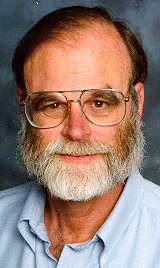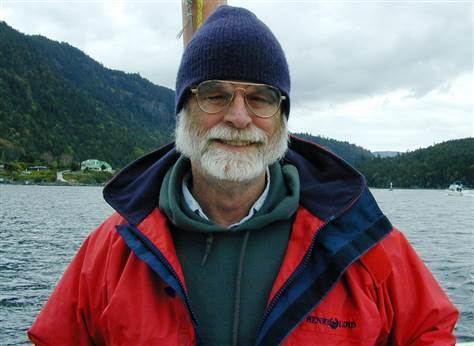Nationality American Role Computer scientist | Name Jim Gray Occupation Computer scientist | |
 | ||
Full Name James Nicholas Gray Status Dead in absentia, May 16, 2012 Books Transaction Processing: Concepts and Techniques Similar People Bill Gates, Ginni Rometty, Steve Ballmer | ||
The search for jim gray
James Nicholas Gray (January 12, 1944 – January 28, 2007?) was an American computer scientist who received the Turing Award in 1998 "for seminal contributions to database and transaction processing research and technical leadership in system implementation."
Contents
- The search for jim gray
- Tribute to honor jim gray general session
- Early years
- Research
- Disappearance
- Personal life
- Jim Gray eScience Award
- References

Tribute to honor jim gray general session
Early years

Gray was born in San Francisco, California, the second child of a mother who was a teacher and a father in the U.S. Army; the family moved to Rome where Gray spent most of the first three years of his life, learning to speak Italian before English. The family then moved to Virginia, spending about four years there, until Gray's parents divorced, after which he returned to San Francisco with his mother. His father, an amateur inventor, patented a design for a ribbon cartridge for typewriters that earned him a substantial royalty stream.
After being turned down for the Air Force Academy he entered the University of California, Berkeley as a freshman in 1961, paying $67 per semester. To help pay for college he worked as a co-op for General Dynamics, where he learned to use a Monroe calculator. Discouraged by his chemistry grades, he left Berkeley for six months, returning after an experience in industry he later described as "dreadful." Gray earned his B.S. in Engineering Mathematics (Math and Statistics) in 1966.
After marrying, Gray moved with his wife Loretta to New Jersey, his wife's home state; she got a job as a teacher and he got one at Bell Labs working on a digital simulation that was to be part of Multics. At Bell, he worked three days a week and spent two days as a Master's student at New York University's Courant Institute. The couple planned to work for a year, making "enough money so that we could take off five years and go travel around the world." Before commencing their travel plans, they returned to Berkeley for three months. After about two months travelling, they returned again to Berkeley, their interest in travelling satisfied. Gray entered graduate school with Michael Harrison as his advisor. Gray got his Ph.D. in 1969, in programming languages, which was followed by two years of post-doctoral work for IBM.
Research
Gray pursued his career primarily working as a researcher and software designer at a number of industrial companies, including IBM, Tandem Computers, and DEC. He joined Microsoft in 1995 and was a Technical Fellow for the company until he was lost at sea in 2007.
Gray contributed to several major database and transaction processing systems. IBM's System R was the precursor of the SQL relational databases that have become a standard throughout the world. For Microsoft, he worked on TerraServer-USA and Skyserver.
Among his best known achievements are:
He assisted in the development of Virtual Earth. He was also one of the co-founders of the Conference on Innovative Data Systems Research.
Disappearance
On Sunday, January 28, 2007, during a short solo sailing trip to the Farallon Islands near San Francisco to scatter his mother's ashes, Gray and his 40-foot yacht, Tenacious, were reported missing by his wife, Donna Carnes. The Coast Guard searched for four days using a C-130 plane, helicopters, and patrol boats but found no sign of the vessel.
Gray's boat was equipped with an automatically deployable EPIRB (Emergency Position-Indicating Radio Beacon), which should have deployed and begun transmitting the instant his vessel sank. The area around the Farallon Islands where Gray was sailing is well north of the East-West ship channel used by freighters entering and leaving San Francisco Bay. The weather was clear that day and no ships reported striking his boat, nor were any distress radio transmissions reported.
On February 1, 2007, the DigitalGlobe satellite did a scan of the area, generating thousands of images. The images were posted to Amazon Mechanical Turk in order to distribute the work of searching through them, in hopes of spotting his boat.
In the immediate aftermath of the disappearance, many theories were put forward on how Gray disappeared.
On February 16, 2007, the family and friends of Jim Gray Group suspended their search, but continue to follow any important leads. The family ended its underwater search May 31, 2007. Despite much effort and use of high-tech equipment above and below water, searches did not reveal any new clues.
After being missing for five years, Gray was legally assumed to have died at sea on January 28, 2012.
Personal life
While at Berkeley, Gray and his first wife Loretta had a daughter; the couple later divorced. He is survived by his wife, Donna Carnes, his daughter, three grandchildren, and his sister Gail.
The University of California, Berkeley and Gray's family hosted a tribute to him on May 31, 2008. The conference included sessions delivered by Richard Rashid and David Vaskevitch. Microsoft's WorldWide Telescope software is dedicated to Gray. In 2008, Microsoft opened a research center in Madison, Wisconsin, named after Jim Gray.
Jim Gray eScience Award
Each year, Microsoft Research presents the Jim Gray eScience Award to a researcher who has made an outstanding contribution to the field of data-intensive computing. Award recipients are selected for their ground-breaking, fundamental contributions to the field of eScience. Previous award winners include Alex Szalay (2007), Carole Goble (2008), Jeff Dozier (2009), Phil Bourne (2010), Mark Abbott (2011), Antony John Williams (2012), and Dr. David Lipman, M.D. (2013).
